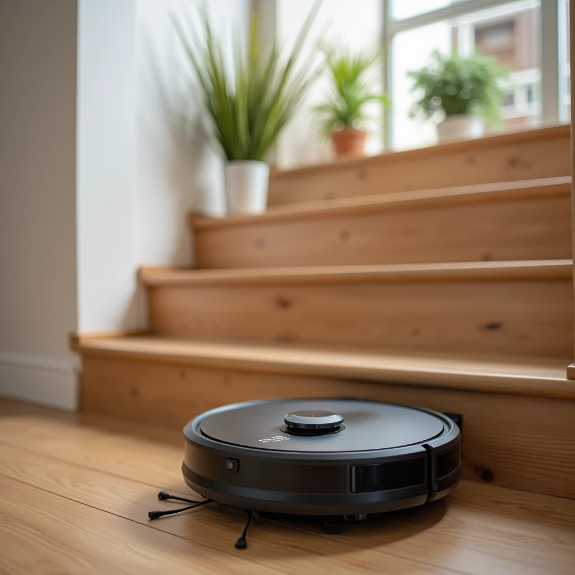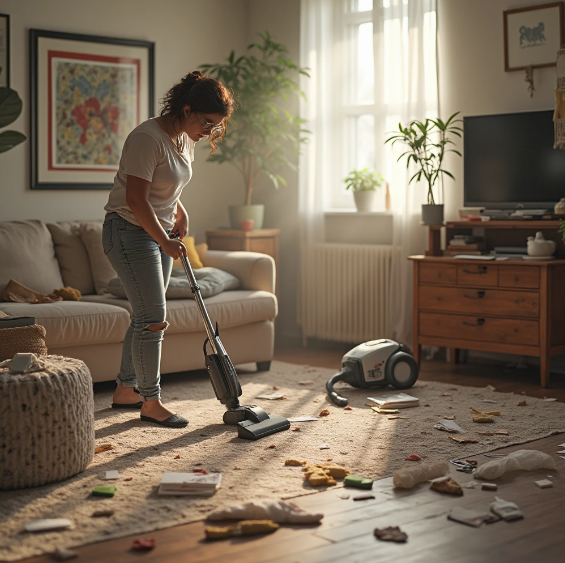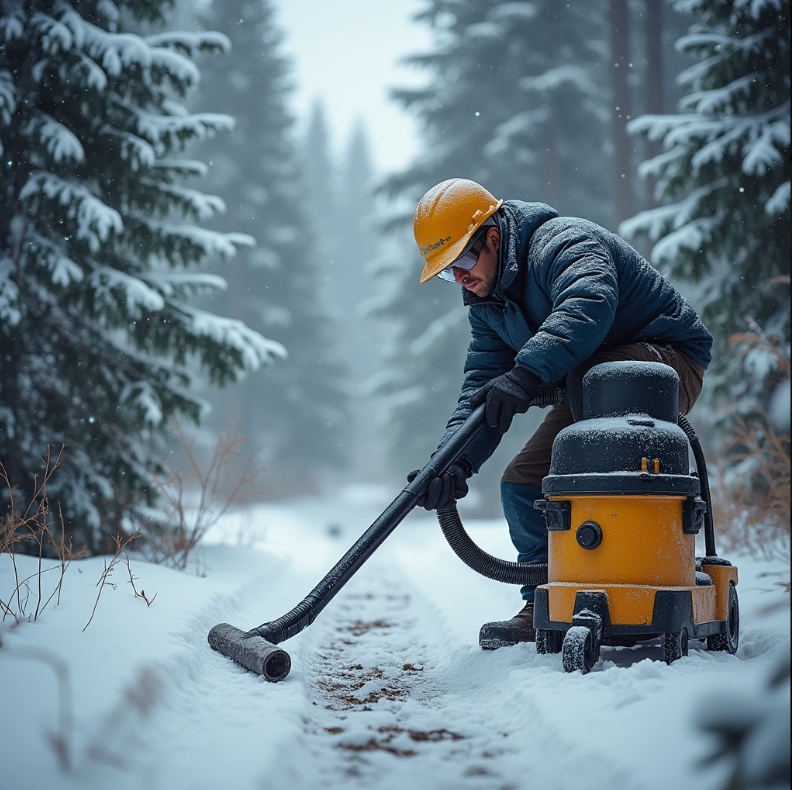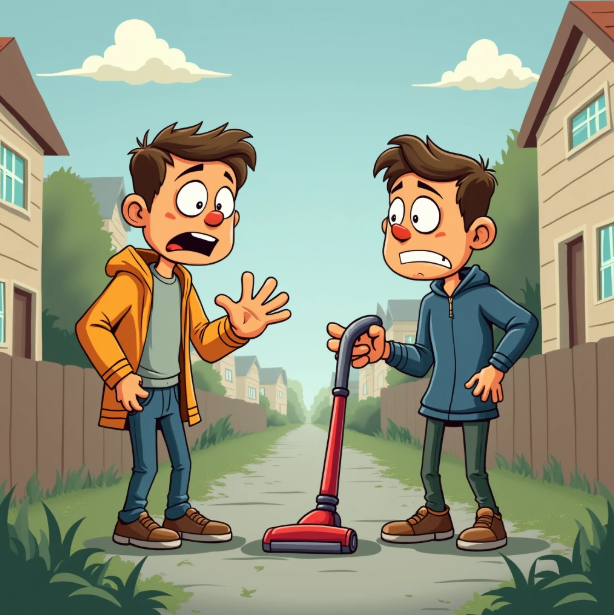Robot vacuums (see products on Amazon here) have revolutionized home cleaning by offering convenience and efficiency. However, one of the most common concerns potential buyers have is how these devices handle obstacles like stairs and steps. Will the vacuum fall off the edge? Can it clean multiple floors? These questions are essential for anyone considering a robot vacuum for their home.
Understanding Cliff Sensors
Cliff Sensors: The Core Technology
Most modern robot vacuums, including popular models like the iRobot Roomba series, are equipped with cliff sensors. These sensors use infrared or ultrasonic technology to detect changes in height. When a robot vacuum approaches a stair or a drop-off, the sensors recognize the potential fall and signal the device to stop or change direction.
How They Work
Cliff sensors emit a signal towards the ground, and if the signal does not bounce back within a certain time frame (indicating a floor below), the vacuum interprets this as a cliff or step. The vacuum will then stop, reverse, or turn to avoid falling.
Limitations of Cliff Sensors
Challenges with Dark or Shiny Floors
While cliff sensors are generally reliable, they can sometimes misinterpret dark or shiny floors as a drop-off. This can cause the vacuum to avoid certain areas unnecessarily. Manufacturers are continuously improving sensor technology to reduce these errors, but it’s something to keep in mind if your home has such flooring.
Stair Cleaning
Robot vacuums cannot clean stairs themselves. Their design and functionality are limited to flat surfaces, so traditional vacuuming is still necessary for staircases. However, some homeowners find creative solutions, such as using a handheld vacuum attachment or pairing their robot vacuum with a separate handheld device for stair cleaning.
Multi-Floor Cleaning
Manual Relocation
Most robot vacuums require manual relocation to clean different floors. You can carry the vacuum to the next floor, where it will begin a new cleaning cycle. Some models can remember multiple floor plans, making them more efficient when used across different levels of a home.
Advanced Models with Multiple Docking Stations
High-end models offer the convenience of multiple docking stations, allowing you to set up charging bases on each floor. The vacuum can recognize different floors and automatically adjust its cleaning patterns based on the pre-mapped layouts. This feature is particularly useful for large homes with multiple stories.
Safety Measures and Best Practices
Regular Maintenance
To ensure the cliff sensors function properly, regular maintenance is crucial. Dust and debris can accumulate on the sensors, leading to inaccurate readings. Wiping the sensors with a dry or slightly damp cloth can help maintain their performance.
Testing the Boundaries
Before relying entirely on a robot vacuum’s ability to avoid stairs, it’s a good idea to test its sensors. Place the vacuum near a stair edge and observe its behavior. This test can provide peace of mind and ensure the device is operating correctly.
Using Virtual Barriers
Many robot vacuums come with virtual barriers or boundary strips that you can place near stairs or other areas you want the vacuum to avoid. These accessories create an invisible line that the vacuum will not cross, adding an extra layer of safety.
Future Innovations
Improved Sensor Technology
The future of robot vacuums includes advancements in sensor technology. Companies are investing in AI and machine learning to help vacuums better understand their surroundings and adapt to complex environments. These improvements may lead to more accurate cliff detection and potentially even stair-cleaning capabilities.
Integration with Smart Home Systems
As smart home ecosystems grow, robot vacuums are becoming more integrated with other devices. For example, smart home systems can provide additional navigation data, improving the vacuum’s ability to clean efficiently and safely navigate around obstacles, including stairs.
Robot vacuums have made home cleaning easier and more convenient, but they still have limitations when it comes to stairs and steps. With the help of cliff sensors and other safety features, these devices are designed to avoid falling, ensuring they operate safely in multi-level homes. While they can’t clean stairs yet, innovations in the field promise a future where robot vacuums could tackle even more complex cleaning tasks.
By understanding how these devices work and implementing best practices, homeowners can maximize the benefits of their robot vacuums while maintaining a safe environment. If you want to learn more about vacuums cleaners, follow us at bestvacuumsguide.com.







